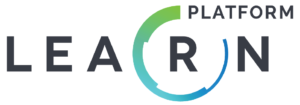 In advance of the VSTE22, LearnPlatform has published a report on the usage of digital solutions, tools, and resources used by a sample of twelve K-12 districts representing just under 100,000 students and more than 15,000 educators across the state during the 2021-2022 school year. Along with a list of the top 40 digital tools with the most student and teacher interactions, the report also provides insights on overall edtech usage trends.
In advance of the VSTE22, LearnPlatform has published a report on the usage of digital solutions, tools, and resources used by a sample of twelve K-12 districts representing just under 100,000 students and more than 15,000 educators across the state during the 2021-2022 school year. Along with a list of the top 40 digital tools with the most student and teacher interactions, the report also provides insights on overall edtech usage trends.
The data shows that teachers accessed 184 unique tools on average over the course of the entire school year, while students accessed an average of 177 unique tools during the same time period. At the district level, these numbers translate to an average of 1,759 edtech tools being accessed every month! These numbers are higher than those reported in LearnPlatform’s national EdTech Top 40 published earlier this year.
Stats in this report include a breakdown of the top 40 solutions by their primary function.
What do these numbers tell us? At a high level, it confirms that students and teachers are interacting with a large number of different tools throughout the school year. This can pose challenges for school and district leaders when it comes to ensuring all of the tools being used are safe, equitable and having a positive impact on student learning.
It’s critical that school and district leaders have visibility into the technology tools being used for teaching and learning both in and out of the classroom by their teachers and students. From there, they can explore whether those tools meet their needs and are compliant with federal, state and local requirements. The Virginia EdTech Top 40 Report provides a starting point for district stakeholders to hold conversations about safe and effective use of technology for education.
Find out how you can get insight into the edtech tools used in your district, for free, with LearnPlatform’s Inventory Dashboard.
With funding limited, every district should be thinking critically about their use of technology tools to ensure they are delivering a return on the district’s investment of time and financial resources. We look forward to discussing how an edtech effectiveness system empowers districts to build an efficient edtech ecosystem that supports evidence-informed decisions throughout the edtech selection, vetting and evaluation processes during the VSTE conference.



